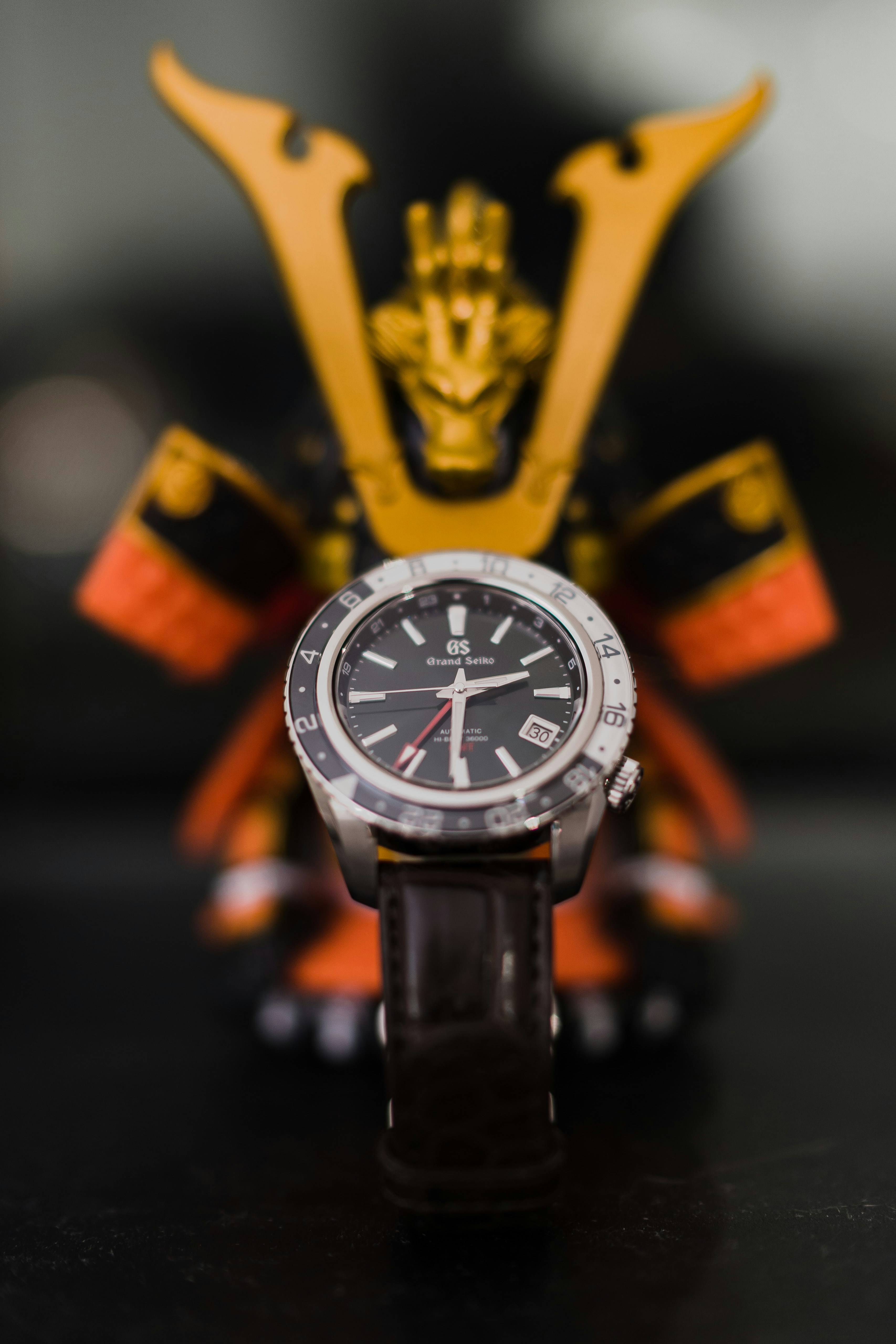The Origins of Seiko and Grand Seiko
Seiko, a name synonymous with precision timekeeping and innovation, was founded in 1881 by Kintaro Hattori in Tokyo, Japan. Originally starting as a watch and clock shop, Hattori’s vision was to provide high-quality timepieces that would reflect Japanese craftsmanship. Over the years, Seiko established itself as a pioneer in the horological industry, introducing several groundbreaking technologies, including Japan’s first wristwatch and the world’s first quartz watch in 1969. These milestones marked significant advancements in the efficiency and accuracy of timekeeping.
The introduction of the Grand Seiko line in 1960 represented a pivotal moment in Seiko’s evolution. This collection was born out of the ambition to create the ultimate Japanese watch, combining traditional craftsmanship with innovative technology. Grand Seiko was designed with a commitment to precision, durability, and stunning aesthetics, embodying not just functionality but also the spirit of artistry. Each Grand Seiko timepiece reflects the delicate balance of high-quality materials and impeccable finishing techniques that are hallmarks of Japanese watchmaking.
Post-war Japan experienced a cultural and technological renaissance, which greatly influenced Seiko’s outlook. With a focus on revitalizing its manufacturing processes and showcasing Japan’s unique identity, Seiko positioned Grand Seiko as not merely a watch but a symbol of Japan’s dedication to craftsmanship. The meticulous attention to detail evident in each Grand Seiko is a testament to the brand’s ethos of marrying precision with artistry. As a result, Grand Seiko not only emerged as a luxurious timepiece but also as a representation of Japan’s place in the global watchmaking arena, solidifying its legacy in horological history.
The Ingenious Spring Drive Mechanism
The Spring Drive mechanism, developed by Seiko, represents a revolutionary advancement in the world of horology, harmonizing the precision of quartz with the traditional mechanics of mechanical movements. This unique technology, embraced primarily by Grand Seiko, operates through a configuration that is both intricate and ingenious. At its core, the Spring Drive utilizes a mainspring that stores energy—similar to a mechanical watch—yet it incorporates a quartz crystal oscillator to regulate the release of that energy.
One of the defining characteristics of the Spring Drive is its exceptional accuracy. While traditional mechanical watches may exhibit a variance of several seconds per day, Grand Seiko watches equipped with this technology can achieve an astonishing precision of ±1 second per day. This remarkable accuracy is attributed to the integration of the quartz oscillator, which regulates the gear train while enabling a seamless and smooth transition of the second hand—an aesthetic feature that is often likened to the movement of a gliding brush stroke.
Moreover, the Spring Drive offers practical advantages that enhance the user experience. With a power reserve typically ranging from 72 hours to upwards of a week, it surpasses many traditional automatic watches, ensuring that the wearer can enjoy their timepiece without the frequent need for winding. The absence of a traditional escapement in this mechanism also results in reduced wear and tear, contributing to the longevity and durability of the watch. As luxury watch enthusiasts seek refined craftsmanship, the Spring Drive’s innovative features, pairing mechanical charm with quartz precision, significantly set Grand Seiko apart in the competitive luxury watch industry. The Spring Drive has indeed crafted a legacy that signifies the pinnacle of watchmaking technology.
Artisanal Finishing and Craftsmanship of Grand Seiko
Grand Seiko is celebrated not only for its precision timekeeping but also for its exceptional artisanal craftsmanship and meticulous finishing techniques. Each Grand Seiko watch is a testament to the dedication and skill of the artisans who create them, combining traditional Japanese practices with modern technology to achieve remarkable results. One of the most distinctive techniques employed is Zaratsu polishing, a method that creates a mirror-like finish on the watch cases. This technique requires extensive training and experience, enabling artisans to skillfully manipulate the surface, enhancing the beauty and quality of each piece.
Zaratsu polishing is particularly notable for its ability to reflect light in a unique way, which makes the watch cases shimmer with an elegant brilliance. This intricate finishing process is not merely about aesthetics; it reflects a deeper cultural appreciation within Japanese society for beauty and craftsmanship known as “Monozukuri.” This philosophy emphasizes the importance of not just creating a functional item, but also ensuring that the object possesses aesthetic appeal and a connection to artistic expression.
In addition to Zaratsu polishing, Grand Seiko watches incorporate other finishing techniques that highlight the brand’s commitment to craftsmanship. For example, the “Grain” and “Agu” finishes are applied to various components, offering a perfect balance between texture and sheen. Specific models, such as the Grand Seiko SBGA413, known for its exquisite cherry blossom dial and flawless polishing, stand as exemplary representations of this meticulous artistry. Moreover, the heritage model, the Grand Seiko 62GS, showcases the stunning interplay of light and shadow, thanks to the expert finishing techniques.
This dedication to exceptional craftsmanship ensures that each Grand Seiko timepiece is not only a highly functional watch but also a stunning work of art that embodies Japanese cultural values and the art of watchmaking.
The Seiko Group: Legacy and Future of Japanese Watchmaking
The Seiko Group has played a pivotal role in shaping the landscape of Japanese watchmaking since its inception in 1881. Renowned for their commitment to precision and innovation, Seiko’s influence extends far beyond Grand Seiko. The group’s diverse range of timepieces, including Seiko, Seiko 5, and Prospex, showcases an unwavering dedication to both functionality and style. In recent years, Seiko has prioritized sustainability, integrating eco-friendly practices into its production processes and developing technologies such as solar-powered and kinetic movements. This commitment ensures that the legacy of craftsmanship is upheld while addressing contemporary environmental concerns.
Furthermore, Seiko’s influence over the watch industry is underscored by its integration of cutting-edge technology with traditional Japanese craftsmanship. This marriage of old and new is evident in Grand Seiko, which embodies the pinnacle of the group’s artisanal spirit. Each Grand Seiko timepiece is painstakingly crafted, reflecting a rich heritage while embracing modern advancements—traits that resonate with today’s discerning collectors. As trends evolve and consumer preferences change, Seiko remains agile, making strategic adjustments to align with the demands of the market without compromising its core values. The commitment to evolving while retaining the essence of Japanese artistry is a hallmark of Seiko’s philosophy.
From a collector’s perspective, Grand Seiko holds a significant cultural importance, particularly in Japan, where the attention to detail and craftsmanship are highly esteemed. Globally, this recognition is growing, as collectors and enthusiasts alike increasingly appreciate Grand Seiko as not just a watch brand, but as a symbol of watchmaking excellence. The Seiko Group’s legacy is not solely rooted in its past but is actively shaping the future of horology through innovation, sustainability, and a continued focus on exceptional craftsmanship. As Seiko looks ahead, it maintains a strong commitment to both heritage and progress, ensuring its lasting impact on the watch industry.














